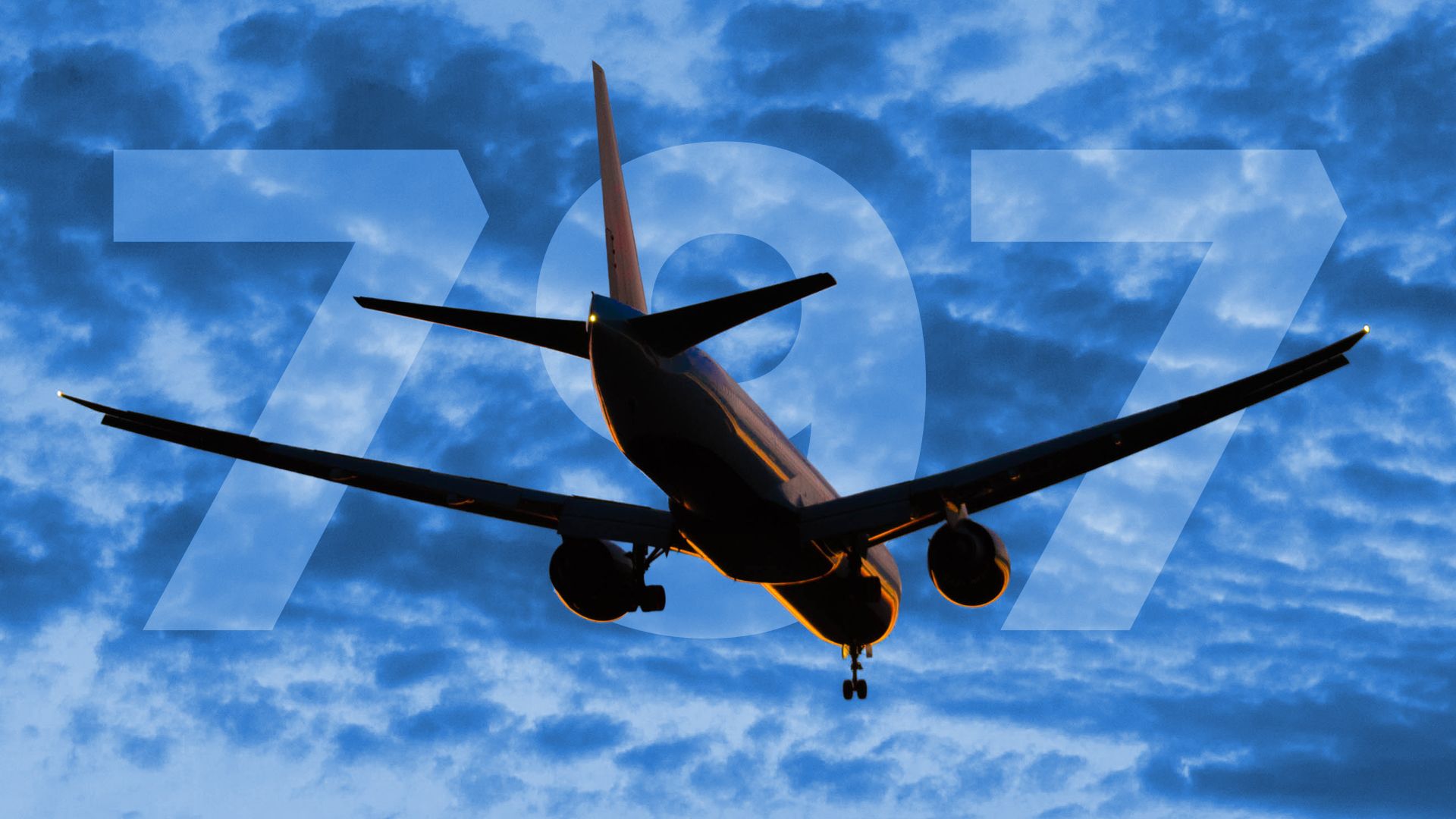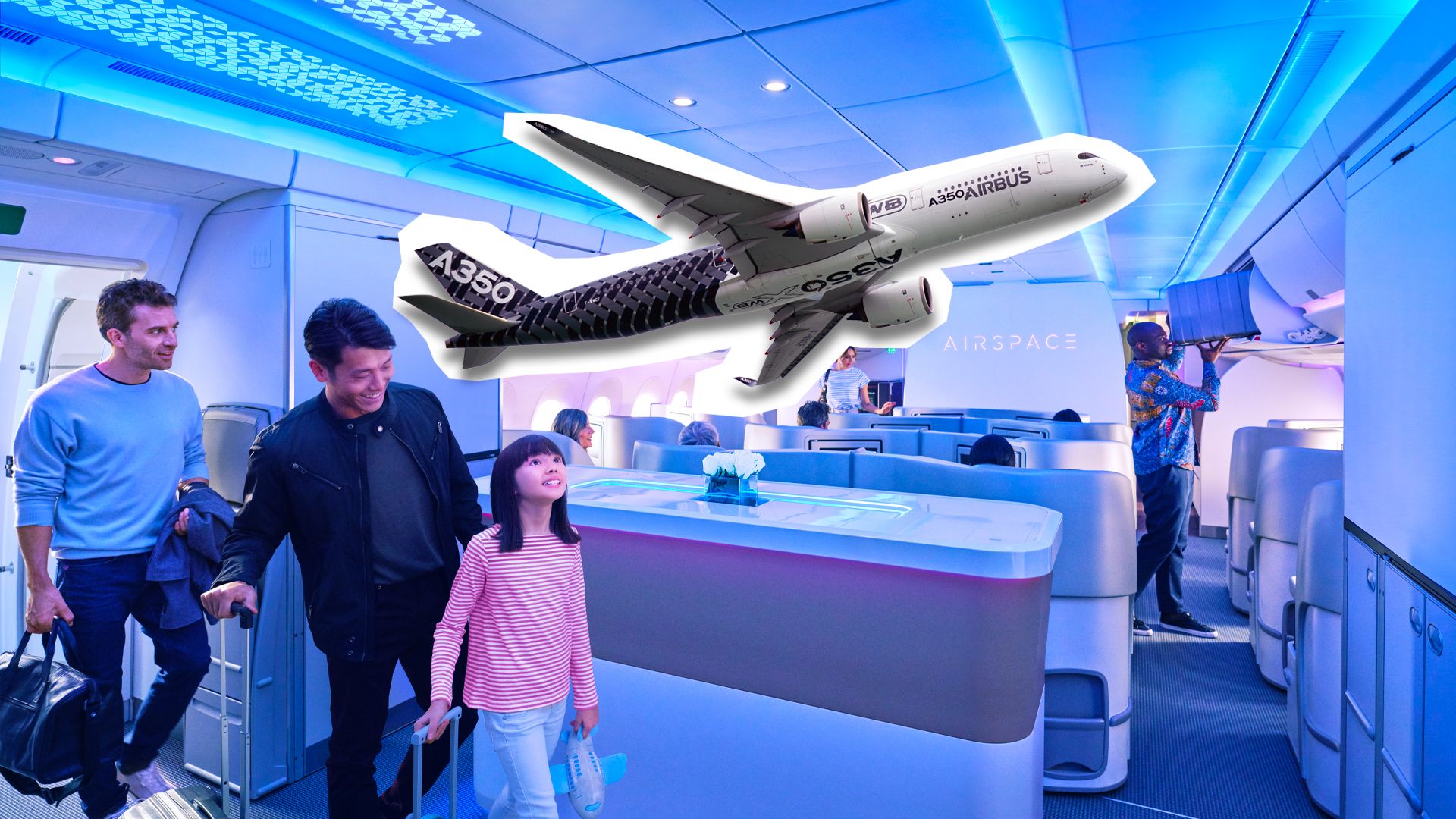Airbus has not launched a new aircraft family since the debut of the Airbus A350 over a decade ago. While the European planemaker is known to be working on an as-yet-unnamed clean-sheet narrowbody design, many have speculated that a new Widebody design is also in the pipeline. This new aircraft family would likely be called the Airbus A390 in line with the manufacturer's typical naming practices.

- Stock Code
- AIR
- Business Type
- Planemaker
- Date Founded
- December 18, 1970
- CEO
- Guillaume Faury
There has been a lot of speculation about what such an aircraft would entail. From an outlandish triple-decker to a possible twin-engined version of the A380, Airbus has not officially announced or divulged any information on a future widebody family. So, what exactly do we know about the A390 and is the concept likely to become a reality?
The Airbus A390: What It Might Look Like
Airbus' A350 program has proven a great success for the company, attracting almost 1,400 orders and with over 650 deliveries thus far. This twinjet widebody followed on from the Airbus A380, the planemaker's most famous aircraft, which debuted in 2007. With the A350 family now in service for over a decade, the company has no urgency to develop a new widebody aircraft family. But what kind of design could Airbus consider when it does?
With the A350 - which includes both the A350-900 and A350-1000 variants - Airbus has the 300-400 passenger market covered and continues to attract new orders for its latest widebody family. Additionally, let's not forget the A330neo, which covers the 260-310 seat market. So, if it were to develop a new twin-aisle jet, it would either need to consider one in the ultra-high-capacity (perhaps 450-500 pax, or more), or something in the midsize category (around 220-270 pax).
It's fair to say that another quadjet widebody aircraft can be ruled out (at least under current engine technology) due to the high operating costs and price of jet fuel. Simple Flying has previously explored whether any new four-engine aircraft would be developed by a major manufacturer, concluding that advances in engine tech have made four engines unnecessary. This would leave us with another two-engine design, unless Airbus ends up developing something on the scale of an A380 again.
The Midsize Option
The biggest gap in the Airbus commercial aircraft portfolio is between the A321neo and the A330neo. While the former narrowbody can seat up to 244 passengers in an all-economy layout, it is typically configured with two classes to accommodate between 180 and 220 passengers. As for the A330neo (the -900 variant), it has a typical three-class capacity of 287 to 303 passengers, although it is certified to a maximum of 465 seats.
Boeing has long been mulling over its own clean-sheet midsize aircraft, dubbed the NMA (New Midsize Aircraft), which is likely to be called the Boeing 797. While efforts were made to get this aircraft off the ground in the mid-2010s, Boeing appears to have gone cold on its NMA concept. While hinting last year that its "team in the Puget Sound region will build Boeing’s next new airplane" - a statement widely regarded as referring to a new midsize aircraft, the planemaker has since maintained radio silence on the matter.
|
Aircraft |
Typical Seating (2-class) |
Maximum Seating |
Range |
|---|---|---|---|
|
A321LR |
180–220 |
244 |
4,000 NM (7,400 km) |
|
Boeing 797 (NMA) |
225–275 (estimated) |
400 (estimated) |
4,500-5,000 NM (8,300-9,300 km) |
|
A390 |
220-280? |
400? |
5,000 NM (9,300 km)? |
|
A330-900 |
287-303 |
465 |
7,350 NM (13,610 km) |
With the global Boeing 757 and Boeing 767 fleets starting to show their age, there is undoubtedly a market for a new midsize addition. Airbus could seize on this opportunity by developing the A390 for the middle of the market segment, and an advanced, modern design with more efficient engines would come with significant operational improvements over existing options.
The Extra-Large Option
Given that its A350 is more than holding its own in the 350-400 passenger market, Airbus would have to go big if it chooses not to make the A390 a midsize plane. Just how big, though? Early rumors of the A390 speculated it would be a three-decker aircraft (the first of its kind), adding another level to the A380's two decks. This aircraft would seat at least 800 passengers and serve long-haul routes, with a range of around 7,000 NM (12,965 km). However, Airbus has never even hinted it was considering such a plane, so these are most likely rumors spread on internet forums and social media.
A more likely development would be an aircraft in the 400-450 passenger range, putting it between the A350/777 and the A380/747 in its capacity. But another ultra-high capacity aircraft isn't entirely unfeasible, particularly if Airbus could manage it with two engines. With the upcoming Boeing 777X soon to debut the world's largest commercial jet engine - the GE9X - within the next 18 months, an engine of similar gargantuan proportions would make a mammoth aircraft like the A380 more viable economically if just the two engines could deliver enough power.
|
Aircraft |
Typical Seating (3-class) |
Maximum Seating |
Range |
|---|---|---|---|
|
A350-1000 |
350–410 |
480 |
8,100 NM (15,000 km) |
|
A390 |
420-450? |
575? |
8,000 NM (14,815 km)? |
|
747-8i |
467 |
605 |
7,790 NM (14,430 km) |
|
A380 |
555 |
853 |
8,500 NM (15,700 km) |
To this end, Rolls-Royce's giant UltraFan geared turbofan engine has been touted as a possible powerhouse for a new large Airbus aircraft. Currently in the demonstrator phase, it is the largest ever built with a 140-inch fan diameter and can deliver 25% less fuel burn than the first generation of Trent engine. Rolls-Royce also has a smaller version in the works that would power narrowbody aircraft, which could very possibly be a new Airbus single-aisle to replace the A320-family.
Based on Airbus' experiences with the A340 and A380, it will be extremely cautious about building another high-capacity plane. The quadjet A340 may have been a good aircraft when it entered service, but the rise of more efficient twinjets and changing ETOPS regulations essentially neutralized what the A340 was built for. As for the A380, while it has certainly proven a success at Emirates, the decline of hub-and-spoke operations across the industry would mean demand for a new ultra-high-capacity aircraft will likely be slim at best.

The Aircraft Replacing The Airbus A380
Airlines are steadily moving away from A380s in favor of long-haul twin-engine aircraft that offer improved efficiency and operating costs.
How Soon Might We See An A390?
As it stands, Airbus is in no rush to develop a new widebody aircraft, particularly with the ongoing success of its A350 program. While the A330neo hasn't sold as well, the planemaker's re-engining of the A330 family reportedly cost just $2 billion to complete, a fraction of the cost of a new, clean-sheet widebody design.
With Airbus also rumored to be reviving plans for a stretched A350, this likely rules out a high-capacity A390 design. But how about the midsize option? One complication in this regard is, of course, the newly launched Airbus A321XLR. With a two-class seating capacity of 180-220 passengers, the A321XLR offers an impressive 4,700 NM (8,700 km) of range and excellent operating economics, making it the superior choice on routes typically flown by the 757 or 767.
With the A321 already a proven platform and its extra-long-range variant attracting upwards of 600 orders, Airbus (and its customers) clearly feel the narrowbody can handle its own in the middle of the market. Assuming no major program setbacks, Airbus could likely have an A390 in service around eight years after announcing the program. So, with no announcement forthcoming, we likely won't see a prospective A390 aircraft in our skies until the late mid-2030s or longer.
What New Aircraft Is Airbus Developing?
Airbus' priority at this stage is to develop a next-generation narrowbody aircraft - with a slated entry date of 2035, the new jet would deliver up to 30% less fuel burn than contemporary narrowbodies through innovative technology like open-fan engines and foldable wings. It is also looking at a stretched A350, possibly called the A350-2000, that would fulfill market needs for a high-capacity, long-haul widebody. With the upcoming 777-9 both offering a capacity around the 410-passenger mark, a stretched A350 would deliver something similar.
In a recent interview with AviationWeek, Airbus CEO Guillaume Faury said that a stretch on the -1000 makes sense with the 777X's imminent arrival, and this option would be far cheaper than developing a new aircraft family. Faury said,
"It will probably be a natural evolution of the product line to continue to increase capacity from the -900 to the -1000 to something slightly longer, bigger, with more capabilities that will come close to the 777X in terms of seat count."
The planemaker has been seriously considering the prospect of a re-engined A350neo, with news reports from 2019 revealing extensive discussions with enginemaker GE Aerospace on a possible new engine. Airbus has updated existing aircraft with new engine options, including a widebody in the A330, so this is another option on the table. The company is also in the process of finalizing feasibility studies on a stretched A220, called the A220-500, which it says will be ready for service in the early 2030s.







